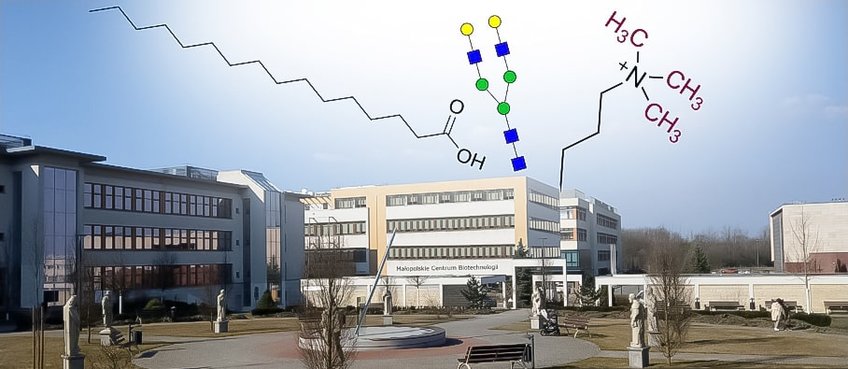
Mateusz Sikora – Dioscuri Centre for Modelling of Posttranslational Modifications
Leader of the Dioscuri Centre: Dr. Mateusz Sikora
Partner from Germany: Prof. Dr. Gerhard Hummer, MPI of Biophysics
Host Institution: Małopolska Centre of Biotechnology, Jagiellonian University Krakow
Introduction
Proteins, which are made following the instructions from our DNA, get modified after they are created. These modifications are like adding special tags to the proteins that can change how stable they are, where they go in the cell, and how they interact with other molecules. When these modifications, known as post-translational modifications (PTMs), go wrong, they can lead to various diseases like brain disorders, skin problems, or cancer. Also, harmful organisms like viruses can use PTMs to hide from our body's defense system.
To fight these diseases and protect against these harmful organisms, it's important to understand these modifications in detail at a molecular level. However, studying PTMs is tough because they are not only small, but also very dynamic, making them hard to see with traditional methods used in biology.
In our research centre, we use large supercomputers to simulate proteins with PTMs. By this “computational microscope” we can see how they impact proteins, and ultimately, the health of our cells. In the long run, by answering these questions, our research will lead to better therapies against pathogens and development of new classes of PTM-aware drugs.
Who We Are
Dioscuri Centres are research groups in Central and Eastern Europe, initialized by the Max Planck Society and jointly funded by German and Polish governments. Supported by partners from Germany, Dioscuri Centres are established at research institutions that offer an environment for cutting-edge research. Centres are funded for an initial five years and can be extended for a further five years after successful evaluation by external experts.
About the PI
Mateusz Sikora, previously a Postdoctoral Fellow at the MPI for Biophysics (Frankfurt) also affiliated with the University of Vienna, first studied at the Jagiellonian University in Krakow (Poland) and then earned his PhD at the Institute of Physics of the Polish Academy of Sciences in Warsaw. In 2012, he went to Austria as a postdoc at the Institute of Science and Technology (IST Austria). Since 2017, Sikora had been working at the MPI for Biophysics in Gerhard Hummer's Department for Theoretical Biophysics within the framework of an Erwin Schrödinger Fellowship abroad funded by the Austrian Science Fund FWF. From May 2023, Sikora established the Dioscuri Centre for Modelling of Posttranslational Modifications at the Małopolska Centre of Biotechnology (at Jagiellonian University).
Key Collaborators
- Gerhard Hummer (partner group), MPI of Biophysics, Frankfurt, Germany
- Cyril Hanus lab, INSERM Paris, France
- Danny Hsu lab, Academia Sinica, Taipei, Taiwan
- Peter Hinterdorfer, Johannes Kepler University, Linz, Austria
Selected Group Publications
Other Web Profiles
Our website in Krakow: https://mcb.uj.edu.pl/en_GB/sikora-lab
Twitter: https://twitter.com/BioPhysMatt
Software
GlycoSHIELD is a tool and a Web application (glycoshield.eu) that allows users to rapidly graft glycan conformers onto protein structures. The tool has been created in collaboration with Cyril Hanus lab and Danny Hsu lab.

